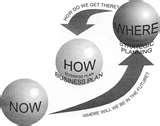As a business owner, you are most likely know firsthand of all the work that goes into running a company, finding customers, keeping employees on task and handling the day-to-day operations. And, you are also acutely aware that mistakes can occur and blunders are part of the territory.
However, there are some tips that you can try to avoid some of the common business blunders listed below so you don’t find yourself saying, “If I had only known, I would have done things differently,” or, “I didn’t realize that my decision would lead to this horrible mistake.”
Do These Mistakes Sound Familiar?
Here are some common mistakes that many of us might be guilty of doing in our own businesses:
- Jumping into a new business direction without careful analysis. You might feel excited and see the dollar signs before completely thinking through the reality of a new business venture like a new product or service.
- Rushing what takes time to build into a viable business. The wrong decisions can be made when you focus on short-term, immediate returns when what you should be doing is being patient and methodical with your decisions and actions. You might end up spending too much money that could cost you dearly down the line.
- Not getting to know customers. If you don’t know what your customers want, you will not find any return for your investment. That’s why the mistake many companies make is throwing money at advertising and marketing programs not designed around a full understanding of the target customer.
- Skipping regular planning sessions. Not focusing on strategy can lead you to make uneducated decisions because you have not studied external factors and aligned your core competencies around changes in the market. This is also a way to circle back and check on what has worked and not worked, leading many business owners to simply keep making the same mistakes.
- Giving up on the business. The biggest mistake a business owner can do is simply give up on their dream and shut down when they don’t have to end it all. While there may be times where there is no other option, that doesn’t mean that it is the only choice you have when you hit a roadblock or experience a setback. However, so many business owners assume that this is the only choice they have when, in reality, they could overcome those challenges and create the next big thing.
A Common Thread: Lack of Experience, Knowledge, and Advice
These five common business mistakes all share similar root causes: business owners lack experience, knowledge, and advice on how to handle their businesses. It’s understandable as most business owners, especially small business owners and new business owners, feel alone. There is often not a sounding board like an executive team or a board of directors where they can approach with questions and concerns about the aforementioned issues.
While there are business associations, these often simply become networking socials where business cards are exchanged over a drink and finger foods. Rarely do significant business challenges get discussed as there may be concerns over confidentiality, competition, or just lack of real concern for each other’s problems. That’s why The Alternative Board® (TAB) was developed.
It has become a resource for business owners that helps them gain experience, knowledge, and advice from peers in a way that is non-competitive but, rather, supportive. Here are some key differences related to the above mistakes:
- TAB members can get feedback and quantitative advice on why a new business direction may or may not make sense. New ideas might save the business owner from making a critical mistake by investing in the wrong direction.
- They can also show a business owner why it pays to wait and let the business simmer and develop before rushing it. This is one of the few times that more than one cook in the kitchen could be really valuable.
- Other TAB members may have insights about your customer base and can share what they have learned; in return, you can also offer input on something they don’t know about. Together, you both learn something new or have gained a different perspective.
- Having additional, experienced eyes looking at strategic decisions is a valuable service, which can help you to stick to a regular strategic planning session as you are required to come to each TAB meeting with strategic updates. This is not a social; it’s a think tank where real results are produced.
- Lastly, TAB members are supportive and they will go that extra mile to help you see how you can keep going even if you feel like shuttering your shop. This support is invaluable because you can be motivated to continue, knowing others have walked a similar path and did not give up.
What’s Your Mistake?
Tell us what you have experienced as a business owner? If you think these mistakes sound familiar, maybe it’s time to find out for yourself how TAB membership can help you miss these mistakes completely and leap toward success. Contact us now!

















































